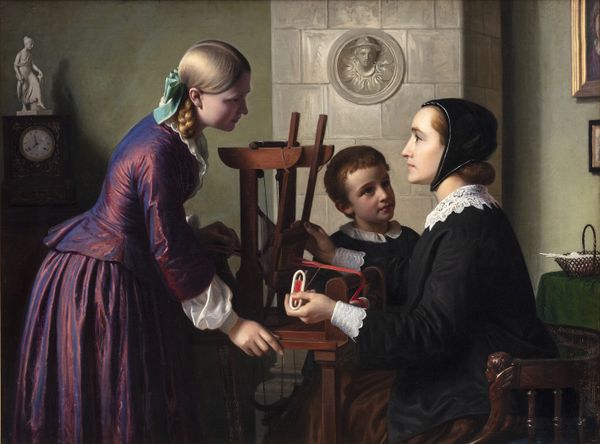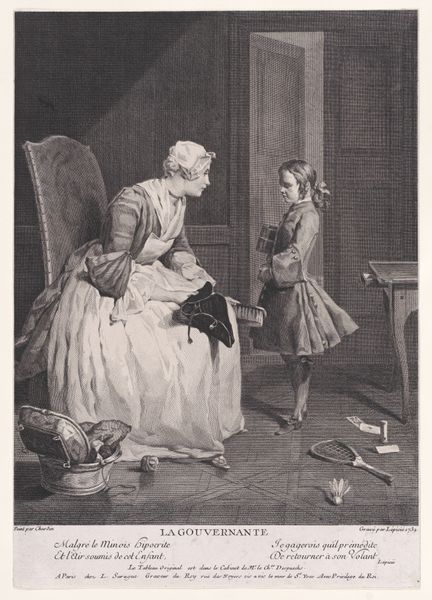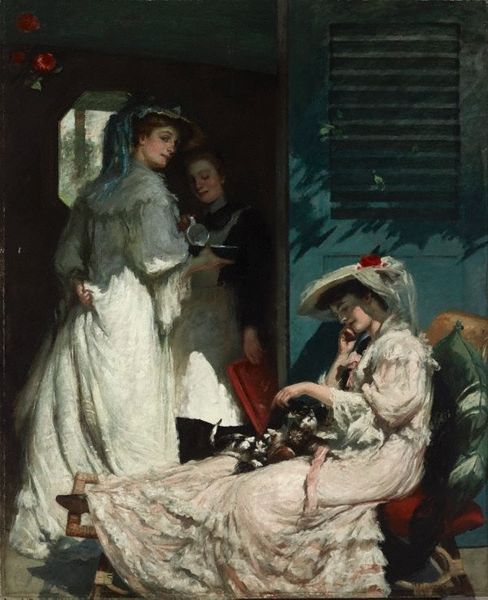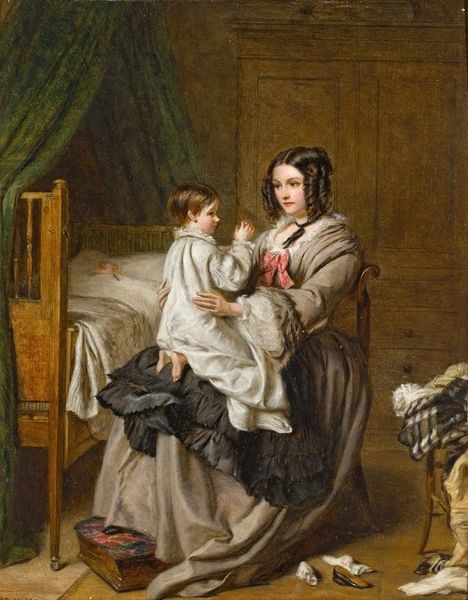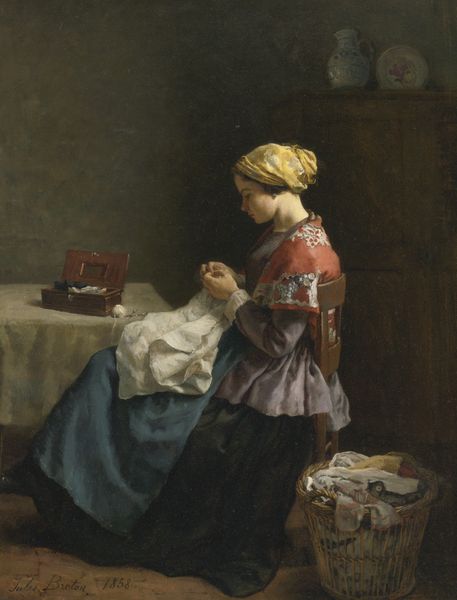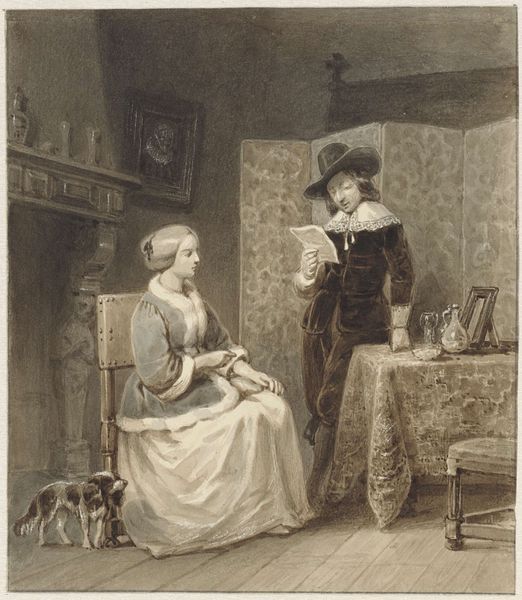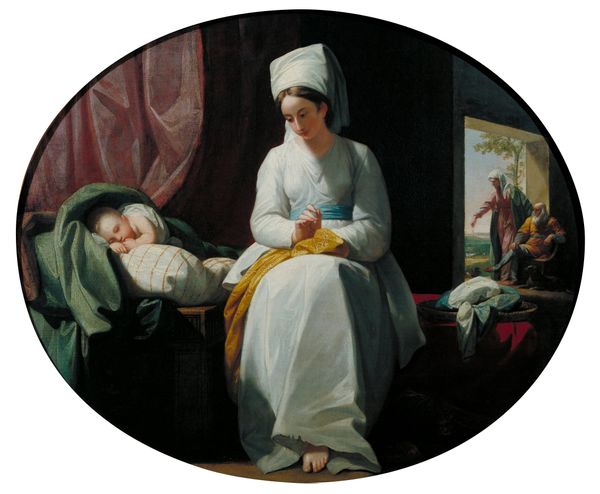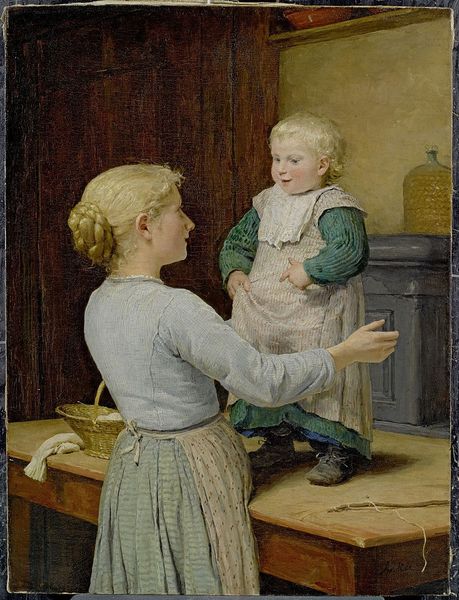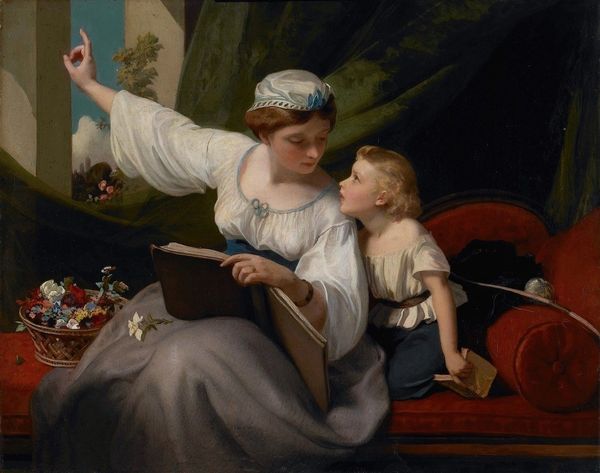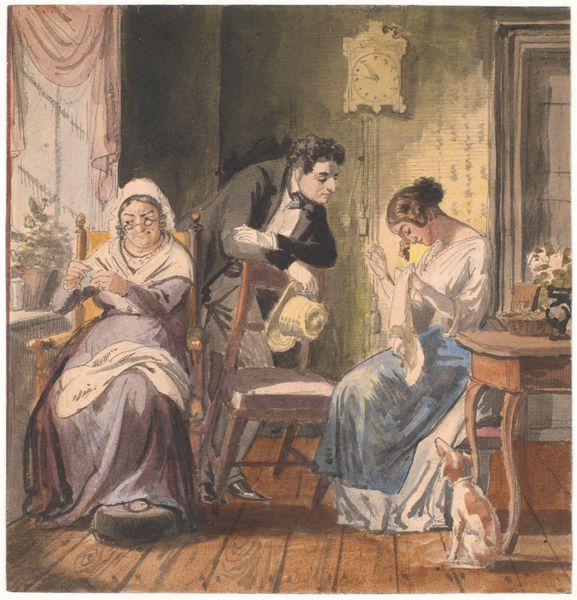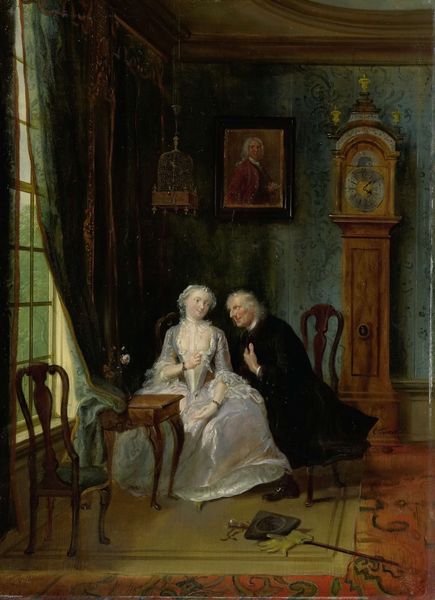
#
gouache
#
cosplay
#
possibly oil pastel
#
culture event photography
#
neo expressionist
#
child
#
underpainting
#
painting painterly
#
abstract character
#
watercolor
#
warm toned green
Copyright: Public domain
Editor: Here we have Jean-Baptiste-Siméon Chardin's "The Governess," created in 1739. It's a painting of a young boy and a woman, seemingly a governess. The overall mood feels quite formal and almost melancholic. What do you see in this piece, beyond the surface narrative? Curator: What I see is a fascinating commentary on the rigid social structures of 18th-century France and the complex power dynamics within them. The boy stands stiffly, holding what appears to be schoolbooks, while the governess lectures him. It speaks volumes about the expectations placed upon children of that era. Editor: So, it's not just a simple domestic scene? Curator: Certainly not. Consider the objects in the room. The discarded toys on the floor—a shuttlecock, a racquet—suggest childhood pastimes being suppressed by the demands of education and social advancement. The governess’s presence underscores a shifting societal view. Who held power in a household, who dictated values and education? Was this woman oppressed too by her duty? Editor: That makes me think about how education then was so class-based and gendered. Only certain people had access, and even then, the access came at a cost. It makes you wonder about the future available to that child, too, depending on gender or the circumstances of birth. Curator: Exactly. And it’s relevant today. Doesn’t it make you question access to knowledge, expectations put on children, and labor and value that still are invisibilized? Chardin, with his quiet domestic scenes, actually prompts us to consider such fundamental questions. It makes this painting rather provocative, doesn't it? Editor: Absolutely! I never would have thought of it that way just by looking at it initially. I’ll definitely look closer at 18th century art now.
Comments
No comments
Be the first to comment and join the conversation on the ultimate creative platform.
